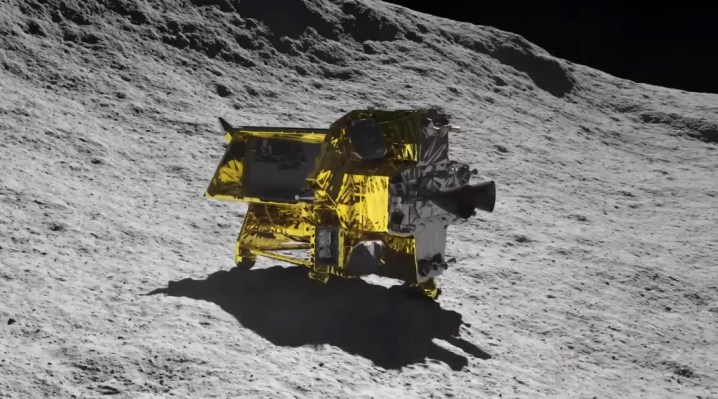A Japanese mission has succeeded in landing on the moon, but it likely won’t last for more than a day due to an issue with its solar cells. The Smart Lander for Investigating Moon (SLIM), from Japanese space agency JAXA, is the second mission in a week to have trouble attempting to land on the moon, showing that despite the Apollo landings occurring more than 50 years ago, lunar landings continue to be a major challenge.

The SLIM lander entered orbit around the moon on December 25 last year and made its landing on Friday, January 19. The soft landing — meaning touching down under control on the surface — was successful, making Japan the fifth country to achieve this feat. A video released last year by JAXA shows the complex landing process that SLIM performed:
“SLIM has been communicated to the Earth station, and it is receiving commands from the Earth accurately. The spacecraft is responding to these in a normal way,” said Hitoshi Kuninaka, Director General of the Institute of Space and Astronautical Science – JAXA, in a press conference following the landing attempt. “However, it seems that the solar cell is not generating electricity at this point in time. Since we are not able to generate electricity, the operation is being done using battery.”
Unfortunately, only a small amount of battery power is available, which will run out within a day. That means the mission will likely soon end unless the sun’s movement allows the solar cells to charge.
While hovering over the moon’s surface, the lander separated two tiny rovers, LEV-1 and LEV-2, and JAXA was able to receive telemetry data from LEV-1. However, LEV-2 relays its data via the lander, so it won’t be able to communicate once the power runs out.
Still, JAXA will attempt to take as many measurements as possible in the limited time before the battery dies. “We are making efforts to maximize the scientific achievement,” Kuninaka said.
JAXA said it hopes to release more information on the status of the mission and its findings next week, including information on the issue with the solar cells.
Editors’ Recommendations

